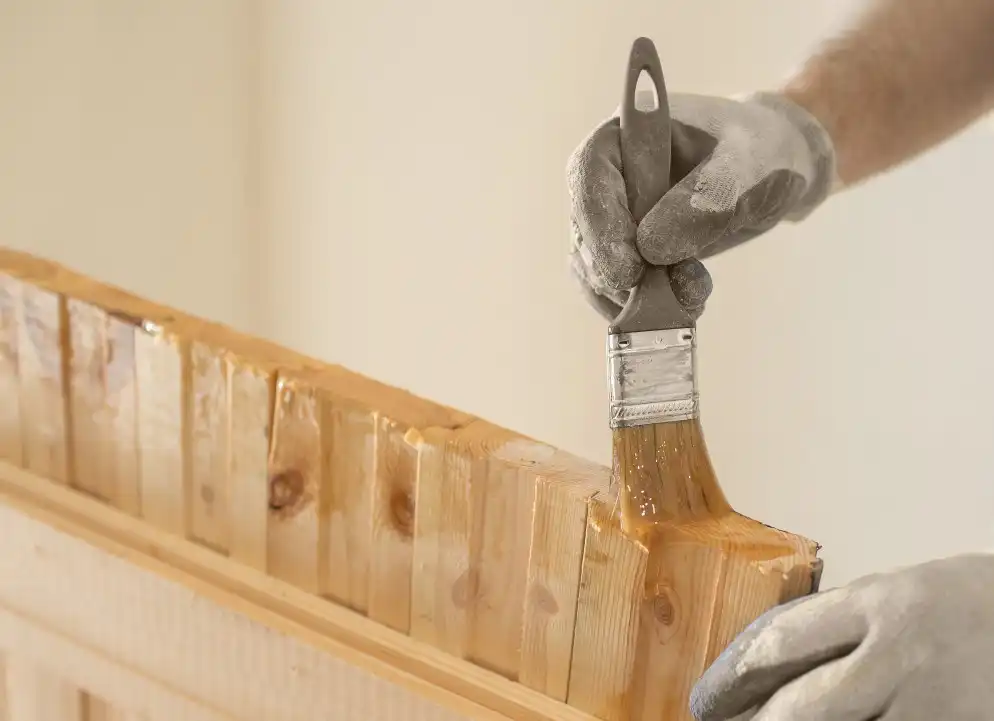Polyurethane and traditional varnish are durable protective coats that are applied to furniture. These coats have different uses and provide varying levels of protection from harsh weather elements. When applied, the finishes will cure and seep into the wood, thereby offering flexible protection.
Correctly choosing between the two will be crucial in providing your furniture with a long, lustrous lifespan. When exposed to the elements, furniture without a finish will often have unattractive consequences. Frequent refinishing will cost you a substantial amount; therefore, it’s best to know what you need.
Properties of varnish
Varnish is popular in woodwork because of its excellent UV protection. You are unlikely to sustain much UV damage; therefore, your color will last longer. The material is flexible, which makes it suitable for furniture.

Pros
- The solution offers a natural resistance to UV rays.
- It provides a rich colour tone similar to dark varnish.
- Low levels of toxicity.
- High level of flexibility.
- Easier to produce than Polyurethane.
Cons
- The application procedure requires high precision and accuracy, which is challenging to perform for beginners.
- You have to apply more layers because it is thin.
Properties of Polyurethane
Polyurethane can become very stiff. Its toughness makes it abrasion-resistant. It has a simple application process that dries quickly. The solution is quite susceptible to UV damage.
Pros
- Polyurethane is durable scratch resistant.
- Polyurethane will dry quickly without a high level of toxicity.
- Polyurethanes have a relatively straightforward application process and can be applied by hand.
- Suitable for beginners and DIY consumers.
- It can be brushed or sprayed.
Cons
- It can crack easily.
- High level of toxicity.
Varnish or Polyurethane for the tabletop?
Polyurethane-based products are often chosen for kitchen tables because of their durability. The tough finish offered by the products can protect against everyday household spills. It can also handle heat well; therefore, it can last many years without attention. Varnishes form a thin skin on the surface of the wood, which requires many layers.
Marine varnish vs Polyurethane
While Polyurethane is either made with a water- or oil-based, the varnish is often cured longer and made from resins, oils, and solvents. You will find a higher ratio of solids meaning that varnish is less susceptible to ultraviolet light damage. The protection offered makes varnish optimal for outside decks and exterior furniture projects.
Spar varnish vs spar urethane
Spar varnish and spar urethane offer different characteristics to the consumer. It provides a lower level of durability, while spar urethane will maintain a hard, shiny surface. The two main aspects to consider are that spar varnish will eventually chip or chalk off over time.
When to use varnish instead of Polyurethane
Varnish is the preferred choice when bearing outdoor surfaces. Consider using this on surfaces such as a deck. The products offer durability, varied color options, and protection against elements.
When to use Polyurethane instead of varnish
Polyurethane is the optimal choice for any indoor household projects you wish to complete. Furniture like bookshelves and desks can be handled well by Polyurethane. The product offers a shiny finish that adds aesthetic value to the furniture.
How do you know when to use varnish or Polyurethane?
Varnish is best for any outdoor surfaces you wish to protect. Polyurethane offers a shiny coating that works well on indoor projects.
Is varnish more durable than Polyurethane?
Varnish does not have the same durable qualities as those you would find in Polyurethane. It is the more flexible option and will work better on your outdoor furniture. It protects against UV damage.
Is Polyurethane the same as varnish?
Polyurethane is comes made with a water- or oil base. This base is formed from plastic resin and protects the wood as a finish. Varnish is an older finish type with traditional benefits for outdoor furniture. It is made from resins, oils, and solvents. The product can offer excellent UV protection.
Can I put Polyurethane over varnish?
Varnish is traditionally hard-wearing, long-lasting, and durable. The high resin value will be more challenging in harsh outdoor conditions. You can apply Polyurethane over varnish without damaging or removing the previously used finish.
What is the difference between varnish and spar varnish?
Spar varnish is commonly used to describe the varnish applied to outdoor wood. It is an ancient boat reference from when spars were made of wood and ships were at sea.
Is spar urethane different from Polyurethane?
Spar urethane is not very durable when it comes into contact with harsh chemicals such as alcohol. When this problem occurs, the finish often becomes degraded. Polyurethane is more challenging and offers excellent resistance to most chemicals, including alcohol.
Which is more durable, spar urethane or Polyurethane?
Spar urethane offers greater flexibility in terms of style. The light shiny finishes that you can accomplish offer consumers more excellent product choices in furniture. Polyurethane will often be more durable if it has an oil base. You can apply this product to both indoor and outdoor purposes.
What is spar varnish good for?
“Spar varnish” is a term that originated from the boating world. Spar varnishes are most popular because of their UV protection capabilities. The product works well because it also provides flexibility. This versatility works well for outdoor furniture that faces different elements.
- 6 Tips To Craft The Perfect DIY Woodworking Project - August 1, 2022
- Six Reasons You Need an Air Filter In Your Wood Workshop - August 1, 2022
- American made wood lathes - May 26, 2022
